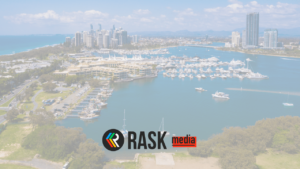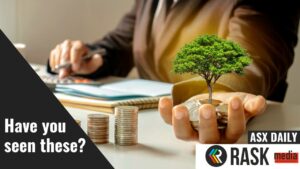If you ask me, the launch of Diversified ETFs from Vanguard and BetaShares are a big deal. They make investing a good ETF portfolio super simple — and for the most part, they’re low-cost.
One Diversified ETF you might be looking at is the Vanguard Diversified Conservative Index ETF (ASX: VDCO).
For a refresher on ETFs, watch our video below or take our popular (and free!) ETF investors course.
Guess what: over 1,000 Australian beginner ETF investors have enrolled in the past few months alone. How fantastic is that! As the Founder of Rask Australia, there’s little that makes me more proud. Enrol today.
How the VDCO ETF can be used in portfolios
The Vanguard VDCO ETF provides investors with exposure to a portfolio of other Vanguard funds. It’s an ETF which invests only in other funds/ETFs — in this case, the VDCO ETF only invests in funds managed by its own provider, Vanguard.
Meaning, with one investment, VDCO gives investors exposure to multiple asset classes like shares, bonds and cash, and is therefore designed to be a diversified portfolio in itself.
$105 million invested in VDCO
As at the end of last month, the VDCO ETF had $104.88 million of money invested. Given VDCO’s total funds under management (FUM) figure is over $100 million, the ETF has met our minimum criteria for the total amount of money invested, otherwise known as FUM.
We draw the line at $100 million for ETFs in the Diversified ETF sector because we believe that, at least relative to smaller ETFs, achieving this amount of FUM de-risks the ETF. For example, if an ETF failed to gain traction with investors and never reached ‘scale’, the money it makes for the ETF provider (e.g. Vanguard) in management fees wouldn’t cover the costs to provide the ETF in the first place.
If an ETF stays small, the ETF provider might be forced to ‘close’ the ETF. This isn’t the worst thing in the world as ETF investors would get their money back, minus fees and costs. However, it’s an inconvenience and can result in tax losses or gains that the investor could have avoided by picking an ETF which is likely to reach scale or is already so large that it’s unlikely to be closed.
If you want to learn more about how we pick and choose ETFs, watch/listen to this episode of our podcast series…
VDCO’s costs and yearly fees
With a yearly management fee of 0.27% charged by Vanguard, if you invested $2,000 in the VDCO ETF for a full year you could expect to pay management fees of around $5.40. That’s pretty darn good!
Keep in mind, though, that this does not include fees like brokerage (e.g. the fees to buy and sell — charged by CommSec, SelfWealth, NABtrade, etc.). Also, keep in mind small fees can make a big difference after 10 or 20 years.
So… is 0.27% per year too high?
I don’t think so. I think it’s pretty low.
The average management fee (MER) of all ETFs covered by Best ETFs Australia on the complete list of ASX ETFs is 0.54% or around $10.80 per $2,000 invested.
Spreads – the invisible cost
As I said above, in addition to a yearly management fee, there are other costs investors must consider. A specific “cost” for ETF and mFund investors is the buy-sell spread, which is the slippage or ‘invisible’ cost paid by an investor when he or she buys or sells the ETF.
For the VDCO ETF, the most recent average monthly buy-sell spread we gathered (April 2020) was 0.54%. Remember, the lower (or ‘tighter’) the buy-sell spread, the better. This buy-sell spread was slightly above the average ETF spread of 0.51%, which means the VDCO ETF has more slippage than the average ETF (that’s a bad thing). However, it was only marginally higher.
What now
If you’re weighing up the VDCO ETF, remember that this is just a brief introduction to the ETF.
The hardest decisions with a Diversified ETF are as follows:
- What’s my risk profile? and
- How long do I have to invest?
The answer to these questions will guide you in deciding which ETF is right for you to consider in the first place. From there, you can assess your options and start your side-by-side comparison of individual ETFs. Of course, you should read the ETF product disclosure statements (PDS) before investing.
If you’re weighing up the VDCO ETF, you should consider (note: the links go to a full review of the ETF):
Finally, members of our Rask ETFs research service can access our most comprehensive 20+ page investment report, covering every diversified ETF, by logging into their Rask ETF account and clicking through to the report. To join our ETF membership simply click here.
[ls_content_block id=”14947″ para=”paragraphs”]




